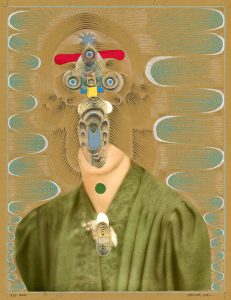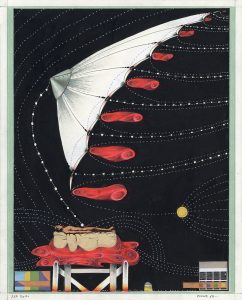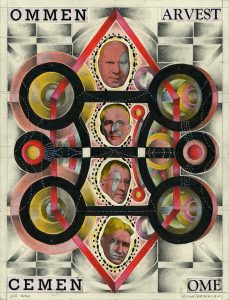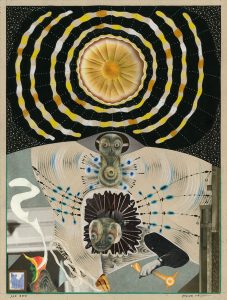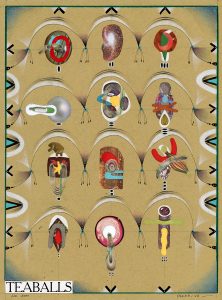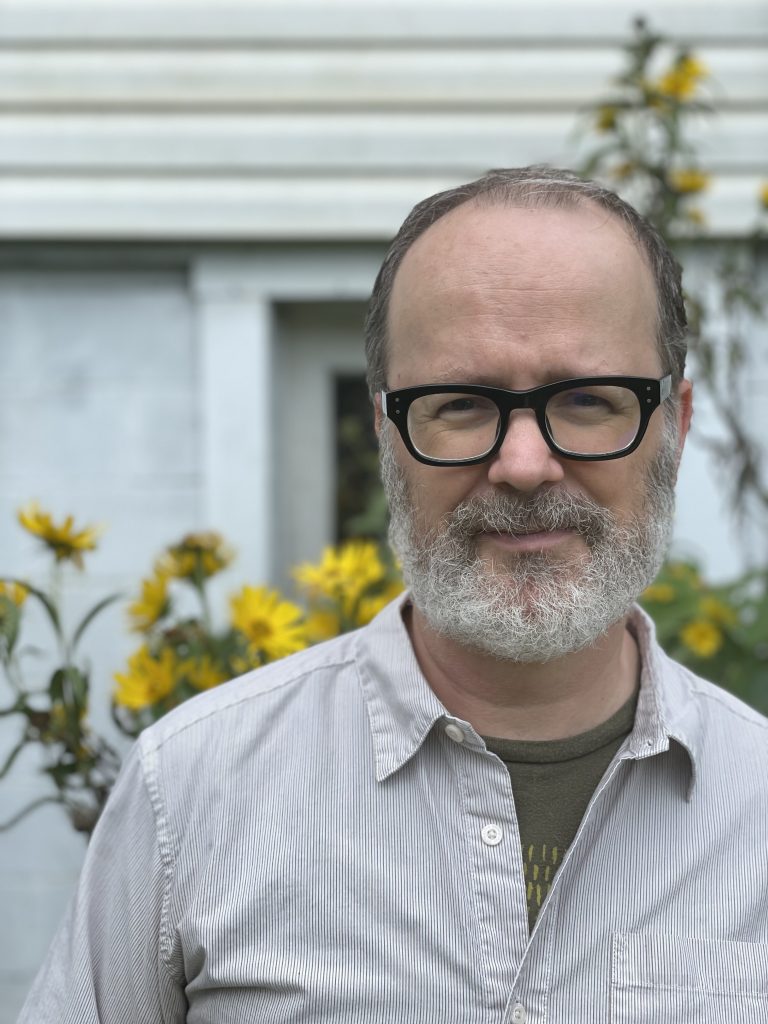 Pop Art of the 1960s is as ubiquitous to collectors as the golden arches of McDonald’s: Lichtenstein, Warhol and Haring can be seen in the galleries of most contemporary American art museums. Initially critiques of consumerism through mass production and institutional elitism, the artists’ collective work in its enduring popularity has almost become the thing it was appraising, reproduced ad infinitum in shoes, hats, shirts, keychains, greeting cards and more. Warhol’s bright soup cans make it easy to forget that the ’60s were rife with political and racial conflict in a country convulsed by the Vietnam War and Civil Rights.
Pop Art of the 1960s is as ubiquitous to collectors as the golden arches of McDonald’s: Lichtenstein, Warhol and Haring can be seen in the galleries of most contemporary American art museums. Initially critiques of consumerism through mass production and institutional elitism, the artists’ collective work in its enduring popularity has almost become the thing it was appraising, reproduced ad infinitum in shoes, hats, shirts, keychains, greeting cards and more. Warhol’s bright soup cans make it easy to forget that the ’60s were rife with political and racial conflict in a country convulsed by the Vietnam War and Civil Rights.
But there was an emboldened and reactive counterculture in the wings. Gathering in Chicago, the proverbial Second City to Pop Art’s base of New York, were next-wave creators who embraced “outsider” art: anti-canon, absurdist, and bizarre. Focusing on eclectic elements of folk art, found objects and a DIY aesthetic, a collective emerged calling itself “The Hairy Who,” graduates of the School of the Art Institute of Chicago who created exciting new work more akin to Abstract Expressionism than Pop Art that would influence generations to come.
Born in 1967, the PureHoney featured artist for this month, JJ Cromer, could have easily been one of The Hairy Who. He has invoked them as inspiration for his work, and as a self-taught artist he is able to personify a DIY ethos through his own vision and voice.
Cromer grew up in coal mining country, in a Virginia town near the West Virginia line, and still lives in the region, although he doesn’t explicitly cite Appalachia in his art. “It’s more like these references are the soil from which the work grows,” Cromer tells PureHoney in an interview.
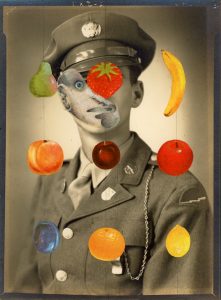
A Father Who Warred with Nearly Everything but Dirt
(7 in. x 5 in. | collage and pencil on vintage photograph | 2022)
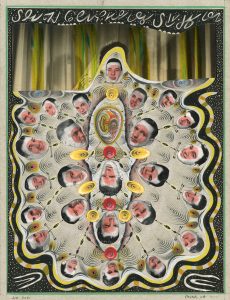
The New Twitchers (Now That They Love Birds There Ain’t a Nest They Won’t Call Home)
(11 in. x 8.5 in. | mixed media on paper | 2021)
He uses pen, ink, collage and colored pencils on paper to achieve a layered, textural quality. He has developed a unique symbolist visual vocabulary that enables patterns, decorations and subject matter to be replicated across his output and understood by the viewer as his visual thumbprint. “Each piece is a kind of puzzle piece, connecting to a prior work,” Cromer says, though even he is unsure what the completed puzzle will be.
He also takes inspiration from a childhood spent in rural Tazewell, Va., with his parents who were both science teachers, and a secondary education in library science and creative writing. Motifs of the environment, literature and methodological grid-like structures can be seen throughout his work.
In a recent interview with Visual Melt, Cromer also said he has also attempted to create political art in The Hairy Who tradition. Asked by PureHoney to elaborate, he says he was referencing a series of his about coal mining. Devastating consequences from decades of industrial digging and poor land reclamation are issues his family and community still reckon with. “I wanted to see if I could make overtly political work,” he says, “where any ambiguity in the piece was secondary to the message: this practice is bad.”
In his former life as a librarian, Cromer took pride in finding answers. As an artist he says he prefers “ambiguity and mystery.” He welcomes “slips of the hand, a misapplied collage, spills,” he says. “They force me to trust my hand and my subconscious to do what needs to be done.” Through dueling acts of creation and destruction, Cromer is able to build tension in his work; a feeling he knows well living in a place where his worldview isn’t the dominant one.
Cromer’s ability to replicate the feeling of motion in his work is equally astounding, considering how small these pieces actually are: most no bigger than a piece of letter-sized paper; larger works topping out at 14”x17”. Much like a movie that reveals something new with each viewing, Cromer’s work is best consumed over an extended period of time.
Despite his lack of institutional training, Cromer has found success in the art world. His primary gallery, American Primitive, is in New York City, and his work can be found in London and Copenhagen, with a permanent home at Baltimore’s American Visionary Arts Museum. He is currently showing at the Outsider Art Fair in Paris. To see his full collection, visit jjcromer.com. You’ll want to zoom in. Follow him on Instagram at @jjcromer
by Veronica Inberg

